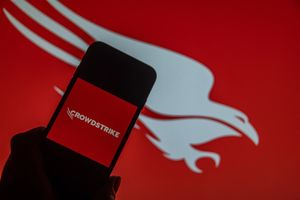Woodemon Partners with Parents to Prioritize Infant Safety with AAP Guidelines
The arrival of a newborn brings immeasurable joy, yet sleep safety remains a critical concern for parents. According to the U.S. Centers for Disease Control and Prevention (CDC), approximately 3,500 sleep-related infant deaths occur annually in the United States. However, research shows that most of these tragedies can be prevented through evidence-based practices. Below, we outline the AAP’s Top 10 Safe Sleep Recommendations to help protect your baby during sleep.
1. Choose Certified Sleep Equipment
Select a crib, bassinet, or portable crib that meets Consumer Product Safety Commission (CPSC) safety standards. Avoid outdated models with drop-side rails, which were banned in 2012 due to suffocation risks. Ensure the mattress fits snugly (no more than two fingers’ width between the mattress and crib sides) and use only a tight-fitted sheet designed for the product.
2. Opt for a Firm Sleep Surface
Babies should always sleep on a firm, flat surface. Soft mattresses, pillows, or cushioned bedding can increase the risk of suffocation. Even sleep positioners or wedges marketed as "anti-reflux" pose hazards—research confirms that flat, firm surfaces are safest for all infants, including those with reflux.
3. Place Babies on Their Backs to Sleep
Regardless of naptime or nighttime, always position babies on their backs for sleep. Contrary to outdated beliefs, stomach-sleeping does not reduce spit-up risks and significantly elevates the danger of SIDS. Once babies can roll over both ways independently (typically around 4–6 months), you no longer need to reposition them, but continue placing them on their backs initially.
4. Keep Cribs Free of Loose Items
Remove blankets, pillows, stuffed animals, and crib bumpers from the sleep area. These items increase suffocation and entrapment risks. Instead, use a wearable blanket (a zippered or buttoned sack) for warmth. Positional devices like nests or wedges are also discouraged, as they may interfere with safe breathing.
5. Offer a Pacifier at Naptime/Nighttime
Pacifier use during sleep has been linked to a reduced SIDS risk, even if it falls out after the baby falls asleep. Breastfed infants should wait 2–3 weeks until breastfeeding is well-established before introducing a pacifier. Never force a pacifier if your baby resists.
6. Swaddle Safely (If Preferred)
Swaddling can soothe newborns, but follow strict guidelines: Use a zippered or Velcro swaddle to prevent loose fabric. Ensure the swaddle allows hip movement and does not restrict breathing. Stop swaddling once your baby shows signs of rolling over or breaking free.
7. Eliminate Cords and Wires Near the Crib
Remove dangling window cords, electrical wires, or baby monitor cables from the crib area to prevent strangulation hazards.
8. Maintain a Safe Room Temperature
Keep the room between 68–72°F (20–22°C) to reduce overheating risks. Dress your baby in layers similar to what you’d wear. Check for sweating, flushed skin, or rapid breathing—signs your baby may be too warm.
9. Room-Share (Not Bed-Share)
Room-sharing (keeping your baby’s sleep space in your bedroom) lowers SIDS risk by 50% during the first 6–12 months. Avoid bed-sharing, which increases suffocation risks. If you accidentally fall asleep while feeding, return your baby to their crib immediately and remove pillows/blankets from the adult bed.
10. Monitor Growth and Development
Regularly track your baby’s height, weight, and milestones to ensure healthy development. Poor sleep patterns may correlate with growth delays. Consider using a Kids Height Ruler for precise, safe measurements—a tool designed to support early intervention if needed.
Final Thoughts
Safe sleep isn’t about luck—it’s about informed choices. By following these AAP-backed guidelines, you create an environment that minimizes risks while promoting restful, healthy sleep for your baby. Remember: Safety never compromises love.
Media Contact
Company Name: Woodemon
Contact Person: Jessica Martinez
Email: Send Email
City: Changsha
Country: China
Website: https://woodemon.com/
More News
View More




Recent Quotes
View More
Quotes delayed at least 20 minutes.
By accessing this page, you agree to the Privacy Policy and Terms Of Service.